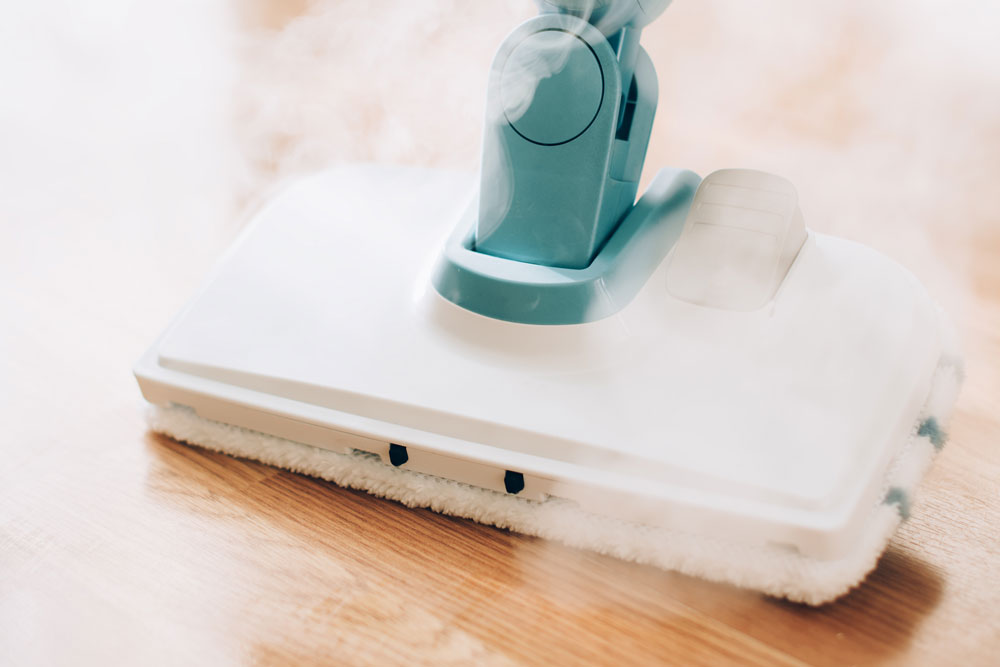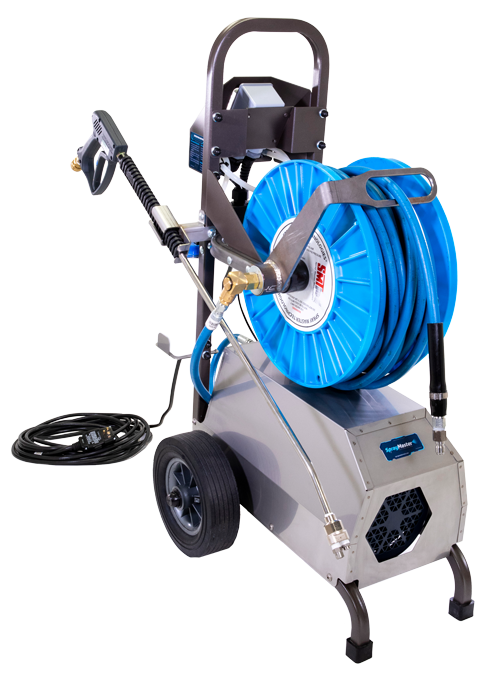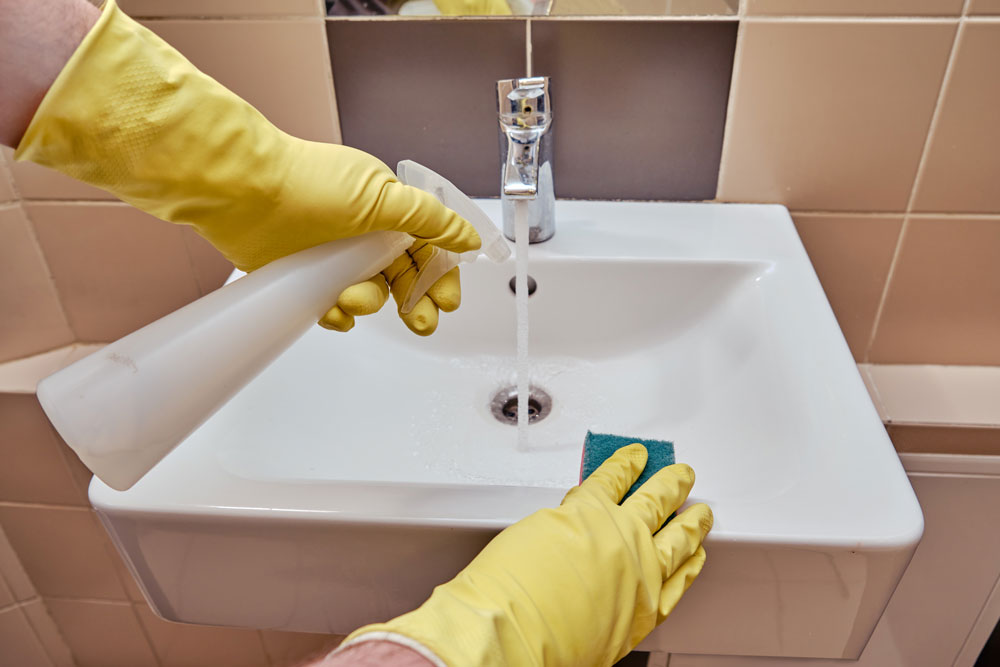By Tracy Morin
Even prior to COVID-19 reshaping the way we live, customers often judged a restaurant based on its cleanliness. Telltale signs of lax practices—stained tabletops, unkempt bathrooms or sticky menus—have always been enough to send many customers making a beeline for the exit. But today, it’s not just about esthetics; it’s about protecting the health of the most crucial people of your business: guests and employees.
“The pandemic has created a shift in customer perceptions regarding restaurant cleanliness—people have a much higher standard nowadays,” says Diana Rodriguez-Zaba, president of ServiceMaster Restoration by Zaba, a Chicago-based company that specializes in restaurant cleaning services. “Clean restaurant bathrooms, in particular, are strongly correlated with positive customer sentiments, while dirty bathrooms reflect poorly on a restaurant’s cleanliness overall.”
Yes, you are being judged at all times—and in all corners. Here, experts share some tactics to make sure you don’t disappoint.
Power Wash Prowess
Barry Healey, regional sales manager for Spray Master Technologies in Rogers, Arkansas, notes that power washing systems have come a long way in the past 10 to 15 years, with technology to provide the user with useful info—and to further protect employees and the restaurant. “LED lights can show when the water level is too low; the system can shut down when the water is too hot, so that employees don’t get burned; and preset levels for chemical-to-water ratios ensure no product waste through proper dilution,” Healey explains. “There have also been accessories developed to push the water straight down, eliminating overspray or spraying body parts by accident, which is painful!”
Healey adds that power washing systems became even more important during COVID times, as more customers were taking advantage of curbside service and drive-through. Suddenly, restaurants were being judged by how clean their parking lots, building exteriors, landscaping and even dumpster areas were kept, as customers were positioned outside instead of inside. Many customers have now moved back indoors, but with labor and inflation both ongoing challenges, power washing systems can also help clean surfaces like floors faster, prevent slip-and-fall accidents, and save money over outsourcing the job to a third-party cleaning company. Healey estimates a system’s ROI at about 16 months.
Picking Up Steam
There have also been updates in steam cleaner technology, with new models that are commercial-grade, yet lightweight and small in size, according to Matthew Baratta, VP of operations for Daimer Industries, a commercial and industrial cleaning equipment company based in Woburn, Massachusetts. “These machines use pressurized steam for sanitizing and disinfecting floors, walls and other surfaces,” Baratta says. “As cleaning equipment like these continue to become more affordable for business owners, even smaller pizzerias can incorporate them into their everyday cleaning practices—they save time and provide better cleaning than is possible by hand.”
Baratta notes that steam cleaners assist professional restaurant cleaning by eliminating bacteria without using harsh chemicals that can damage equipment or leave residue behind on food preparation surfaces. While offering lower pressure than power washers, vapor steam cleaners are equipped to kill bacteria, following Food Safety and Inspection Service (FSIS) cleanliness guidelines. “For example, some steam cleaners offer boiler steam temperatures up to 356°F,” Baratta says. “It can help spot-clean and deep-clean surfaces like hosting areas, storage areas, bathrooms and every other area of the restaurant. It can help not just with cleaning, but with disinfecting and ensuring customer safety and food safety for the long term.”
Baratta’s top two tips for restaurant operators: Plan effectively and obtain the right equipment. “If you create a practical cleaning plan—one that includes different areas of the restaurant and breaks them down by priority, time and who is cleaning what—your process will go so much more smoothly, and you will be much less likely to forget a particular area,” he notes. “Investing in the right equipment—from simple things like disinfectant solution, rags, towels, sponges and mops, to more industrial cleaning options if needed, like steam cleaners or pressure washers—will help you get the entire cleaning process done effectively and hygienically. Plan it out and ensure you have all the equipment you need, and you’ll be ready to keep your restaurant looking spotless for customers.”
Related: Chuck E. Cheese earns Ecolab Science Certified Seal for cleanliness
Automated Assistance
To maximize productivity, Robert Johnson, marketing director at Coast Appliances, based in Vancouver, British Columbia, Canada, recommends investing in innovative commercial cleaning appliances like automatic floor scrubbers and robotic vacuum cleaners. “These specialized cleaning appliances have more robust and sophisticated features to clean floors and other surfaces quickly and effectively,” Johnson says. “Using an automated floor scrubber in a restaurant can eliminate slurry during the cleaning process, leaving the floor clean and dry—plus, it has a wider scrub path than a traditional mechanical floor-scrubbing tool, cleaning much larger spaces quickly and more efficiently. This advanced cleaning technology saves so much time and effort.”
There are also robotic vacuum cleaners for restaurants to handle spills and accidents effectively with minimal disturbance and effective scrubbing action, so that staff members can focus on cleaning tabletops and tackling other cleaning needs. Just make sure that protocols are in place to ensure any cleaning tasks have been managed, whether or not you enlist automated help. “Develop a schedule for increased routine cleaning and disinfection,” Rodriguez-Zaba advises. “Clean shared objects (payment terminals, tables, countertops/bars, receipt trays, condiment holders) frequently. And, since COVID, many owners no longer share items that are difficult to clean, sanitize or disinfect.”
Equipment Intel
When it comes to cleaning, don’t forget the kitchen—it’s the heart of your business. Carolyn Bilger, marketing director of Hobart Food Equipment Group, notes that all food prep equipment, including mixers, slicers and food processors, must be cleaned and sanitized after every use, as well as between uses when switching from one ingredient to another. “For example, when an operator switches from slicing pepperoni to vegetables, the slicer will need to be cleaned,” she says.
Look for equipment that makes your job easier, like slicers with a removable blade and components so you can dismantle the equipment for thorough cleaning; a removable top cover that can be taken off and placed in a dishwasher or sink; and removable ring guard covers and feed grip arm. “Wipe down mixers daily with a soft, soapy cloth, and run the agitators, bowls and bowl guards through a triple-bay sink or ware-washing product to ensure they are properly cleaned,” Bilger recommends. “Continuous-feed-style food processors commonly found in pizza restaurants should be wiped down daily, and the feed hopper removed and cleaned in a three-compartment sink.”
Ultimately, Bilger believes, proper equipment cleaning and sanitization of food prep equipment have always been important, but COVID-19 has drawn even greater attention to thorough cleaning practices. “Customers expect that the dining establishment they go to will be exceptionally clean and are likely to be more critical if they feel it fails to meet their expectations—which can lead to lost business,” Bilger says. “Properly training employees on how to clean and sanitize food prep equipment—as well as the recommended frequency—is critical. Posting directions, with clear steps, near the equipment as reminders can be helpful, especially for new employees!”
Tracy Morin is PMQ’s senior copy editor and the editor of PizzaVegan.com.















